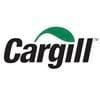Performance and caecal metabolite composition of broilers fed low and high protein diets supplemented with feed additives
Published: August 27, 2025
Source : N.K. SHARMA 1, M. CHOCT 1, S. WU 1 and R.A. SWICK 1 / 1 School of Environmental and Rural Sciences, University of New England, Australia.
Growth promoting effects of zinc bacitracin, Bacillus-based probiotics and a blend of Yucca and Quillaja saponin in broilers have been well documented (Engberg et al. 2000; Cheeke, 2009; Jeong and Kim, 2014). These in-feed additives are commonly used in broiler diets but their effects at different dietary crude protein (CP) concentrations remain unclear. This study was conducted to study the effect of these additives when added to low and high-protein diets on performance and caecal metabolite composition of broilers.
Day-old Ross 308 male broiler chicks (n = 576) were assigned to eight dietary treatments with six replicate pens per treatment and 12 birds per pen. A 2 × 4 factorial arrangement of treatments was employed. Factors were: diet (low CP, high CP) and additive (none, antibiotic, probiotic, saponin). The CP contents in low and high protein diets were: starter phase (210 g/kg vs 260 g/kg), grower phase (195 g/kg vs 240 g/kg), and finisher phase (184 g/kg vs 230 g/kg). The low CP diet was supplemented with crystalline amino acids including L-valine, L-isoleucine and L-arginine, L-lysine, D,L-methionine and L-threonine. The in-feed antibiotic used was zinc bacitracin (Albac 150, Zoetis) at 330 g/t of feed (50 mg/kg), the probiotic was a blend of three Bacillus subtilis strains (Enviva Pro, Dupont Animal Nutrition) at 500g/ton and the saponin was a blend of Yucca schidigera and Quillaja saponaria (Nutrafito Plus, Desert King International) and used at 150 g/t of feed. Data were subjected to two-way ANOVA (using JMP software v.8) and means were separated by Tukey’s HSD test at P < 0.05. The results showed that the birds fed the low CP diet had higher feed intake (FI) and weight gain (WG) at all phases compared to those fed the high CP diet (P < 0.01). The addition of antibiotic, probiotic or saponin to either of the diets had no effect on FI at all the phases (P > 0.05). Antibiotic, but not the other additives, increased WG by 8.2 % on d 10 (P < 0.05). A diet × additive interaction was detected for WG and FCR during other phases. On d 24 and 34, addition of antibiotic to the low CP diet increased WG of birds by 6.1 and 4.9 % (P < 0.05) and decreased FCR by 4 points each (P < 0.05), but WG and FCR were not affected when antibiotic was added to the high CP diet (P > 0.05). Interestingly, when probiotic was added to the high CP diet, improvements in WG of 3.6 % and 2.6 % over the control were observed on d 24 and 34 respectively but the effect was not observed when probiotic was added to the low CP diet. The birds fed the low CP diet had lower concentration of isovaleric acid in the caecal contents compared to those fed the high CP diet (P < 0.05). There was diet × additive interaction for isobutyric acid and branched chain fatty acids (BCFA) in the caecal contents. The birds fed the high CP diet without additives had higher concentrations of isobutyric acid and BCFA in the caecal contents compared to all other treatments (P < 0.05). Addition of antibiotic, probiotic or saponin to the high CP diet, but not to the low CP diet, reduced the concentrations of isobutyric acid and BCFA (P < 0.05). The concentration of H2S in caecal contents also tended (P = 0.054) to change with different dietary treatments with the highest concentration observed in the birds fed the high CP diet.
Thus, zinc bacitracin may improve broiler performance when added to a low-protein diet, and Bacillus subtilis-based probiotic may give better results when added to a diet with high protein content.
Presented at the 29th Annual Australian Poultry Science Symposium 2018. For information on the latest and future editions, click here.
Cheeke PR (2009) Aust. Poult. Sci. Symp. 20: 50-55.
Engberg RM, Hedemann MS, Leser TD & Jensen BB (2000) Poult. Sci. 79: 1311-1319.
Jeong J & Kim I (2014) Poult. Sci. 93: 3097-3103.
Content from the event:
Related topics:
Mentioned in this news release:




Show more
Recommend
Comment
Share

Would you like to discuss another topic? Create a new post to engage with experts in the community.















